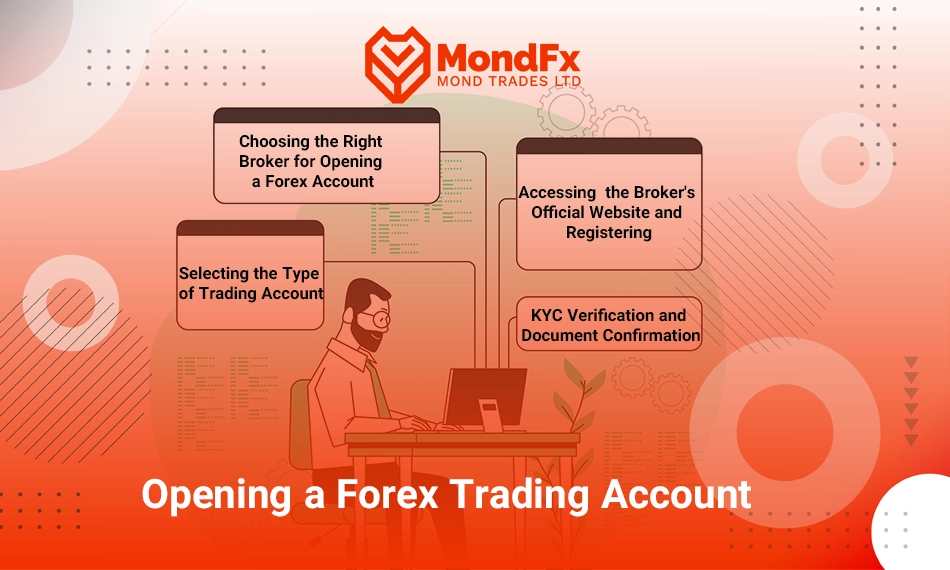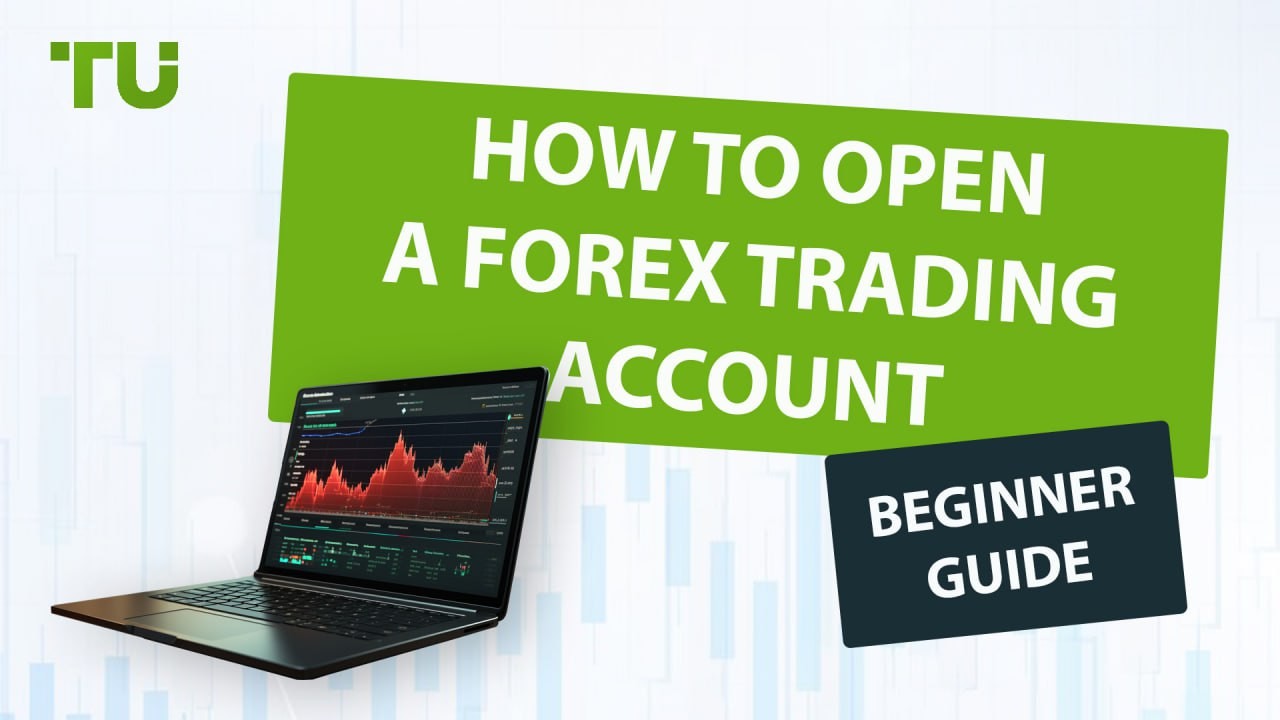Starting your Forex trading journey can feel overwhelming. I still remember the first time I stared at a broker’s application form — full of questions I didn’t understand, documents I didn’t have, and acronyms that made no sense.
It’s not that opening a Forex account is hard. It’s that nobody explains it clearly. Between confusing verification steps, regulatory differences by country, and all the types of accounts, it’s no wonder so many give up before they even start.
So in this guide, I’m walking you through every single step I took — and wish I had known earlier — to open a Forex trading account without stress.
- Why brokers reject your account
- How to pass KYC and upload documents right
- What type of account to choose (demo vs live)
- How to deposit safely and start trading
By the end, you’ll know exactly how to go from zero to a verified trading account you can trust — even if you’re just starting out.
Why Opening a Forex Account Isn’t as Easy as It Sounds
Common Roadblocks for Beginners
When I first tried to register, I hit a wall. The broker rejected my application. Turns out, my proof of address wasn’t recent enough. That one mistake set me back three days.
If you’ve already tried to sign up, you might’ve run into one of these:
- Your uploaded documents weren’t accepted
- You didn’t know which account type to choose
- The broker didn’t support clients from your country
Most of these come down to brokers needing to comply with KYC (Know Your Customer) and AML (Anti-Money Laundering) regulations. It’s not just paperwork — it’s a legal requirement.
What You Need to Know Before You Start
Before filling out anything, ask yourself: What’s my goal with Forex trading? If it’s just to try it out, you can start with a demo. If you’re serious, you’ll need proper documents and some risk tolerance.
Here’s what I always recommend:
- Have a valid passport or driver’s license ready
- Make sure your proof of address is recent (within 3 months)
- Be honest about your trading experience — it won’t block you
You’re not just opening an account. You’re stepping into a financial market where rules matter.
Step-by-Step: How to Open Your Forex Trading Account
Step 1: Choose a Regulated Forex Broker
This is *critical*. A regulated broker means your money is protected, the platform is monitored, and you’re trading legally.
I use brokers regulated by the FCA (UK) or ASIC (Australia). They’ve got some of the best reputations. Don’t go with an offshore broker unless you’ve done deep research.

What to look for:
- Regulation (FCA, ASIC, NFA, CySEC)
- Account types (standard, mini, demo)
- Support for your country
If the website looks shady or you can’t find regulation info — walk away.
Step 2: Gather Your Documents
I learned this the hard way. Having the wrong document format delayed my account approval.
Here’s exactly what most brokers ask for:
| Document | Purpose | Tips |
|---|---|---|
| Photo ID (Passport/Driver’s License) | Verify identity | Make sure it’s not expired and info is readable |
| Proof of Address (Utility Bill, Bank Statement) | Confirm residence | Must be recent (last 3 months) and show your name/address |
| Tax ID or Social Security Number | (Sometimes) for tax compliance | Only some brokers request this |
Step 3: Complete the Online Application
This part usually takes 5 to 10 minutes. You’ll enter your personal info, trading experience, and choose your account type.
Here’s what to expect:
- Your full name, phone, email, address
- Employment and income range
- Trading goals and experience
Don’t worry if you’re a beginner. Most brokers offer demo accounts, and they don’t block you for being new. Just answer truthfully.

Step 4: Verify Your Identity and Address
Once your form is submitted, it’s time for document upload. This is where most people mess up. Don’t take blurry photos or screenshots — the broker won’t accept them.
My tip: scan or use a flat surface with natural light. Double check that the corners of the document are visible and the text is clear.
It usually takes 24 to 48 hours for verification. Some brokers are faster — especially the big ones like IG, IC Markets, or Pepperstone.
Step 5: Fund Your Trading Account
After you’re verified, you’ll get an email like I did: “Welcome! Your account is ready.” Now it’s time to deposit.
Most brokers let you use:
- Bank transfers
- Credit/debit cards
- eWallets (Skrill, Neteller, PayPal, etc.)
Be sure to check the minimum deposit. Some brokers need $100, others let you start with $10. And yes, *some offer bonuses* for your first deposit — but always read the fine print.

Step 6: Start with a Demo Account
If this is your first time, I highly recommend a demo account. It’s how I practiced risk-free for 3 weeks before going live.
You can trade with fake money but real prices. It’s the best way to learn how your platform works without losing a dime.
Some top brokers with great demo platforms include:
- MetaTrader 4 (MT4)
- eToro demo
- IG Trading simulator
Once you’re comfortable, you can switch to a live account and start small — no pressure.
Choosing the Right Type of Forex Account
Account Type Comparison Table
Not all Forex accounts are created equal. I made the mistake of choosing a standard account when I should’ve started with a micro one. Let’s break it down together so you don’t do the same.
| Account Type | Best For | Minimum Deposit | Spreads/Fees |
|---|---|---|---|
| Demo | Complete beginners | $0 | No real money, zero risk |
| Micro | Low-budget traders | $10–$100 | Higher spreads, lower risk per trade |
| Standard | Traders with some experience | $100–$500 | Moderate spreads, normal risk |
| ECN/Pro | Experienced traders | $500+ | Tight spreads, commission fees |
Demo vs. Live: Which One First?
If you’re asking this question, go demo. Seriously. I once lost $250 in a live account simply because I didn’t know how to set a stop loss properly.
With a demo account, you’ll understand how to:
- Place trades and manage orders
- Read price charts (candlesticks, OHLC, etc.)
- Use indicators like RSI or MACD
When you no longer panic when the market moves — that’s your cue to switch to live.
Safety Tips Before You Start Trading
Regulatory Bodies to Trust
Regulators exist to protect you. They force brokers to follow rules and separate your funds from their operating money.
The ones I trust the most are:
If your broker isn’t listed under any of these — pause. Do some digging.
Avoiding Common Pitfalls
Even after verifying your account, it’s easy to make rookie mistakes. I’ve done most of them. These are the big ones to avoid:
- Overleveraging your trades
- Chasing losses emotionally
- Trading without a stop loss
I always remind myself: trading is a marathon, not a sprint. Protect your capital — it’s your oxygen in this game.
FAQs About Opening a Forex Trading Account
How long does it take to open a Forex account?
Most brokers approve accounts in 24 to 48 hours. If your documents are blurry or outdated, it might take longer. Mine took exactly 36 hours with Pepperstone.
Do I need a lot of money to start trading Forex?
Nope. You can start with as little as $10 if you choose a micro account. I began with $100 just to get my feet wet. Start small and scale up as you build confidence.
Is Forex trading legal in my country?
It depends. In countries like the USA, UK, Australia, and most of Europe, Forex is legal and regulated. But some regions restrict retail Forex trading. Always check your local laws or visit the broker’s supported country list.
Let’s Wrap This Up
So let’s recap what you need to do:
- Pick a regulated broker that fits your needs
- Gather your documents before applying
- Go through the application and verification step-by-step
- Start with a demo if you’re unsure, then go live with confidence
Opening a Forex trading account doesn’t have to be scary. When you break it into steps — and know what to expect — it becomes manageable and empowering.
If you’re serious about trading, getting started the right way sets the tone for everything that follows. Take your time, stay cautious, and learn as you go.
And hey — if I could do it, so can you.

